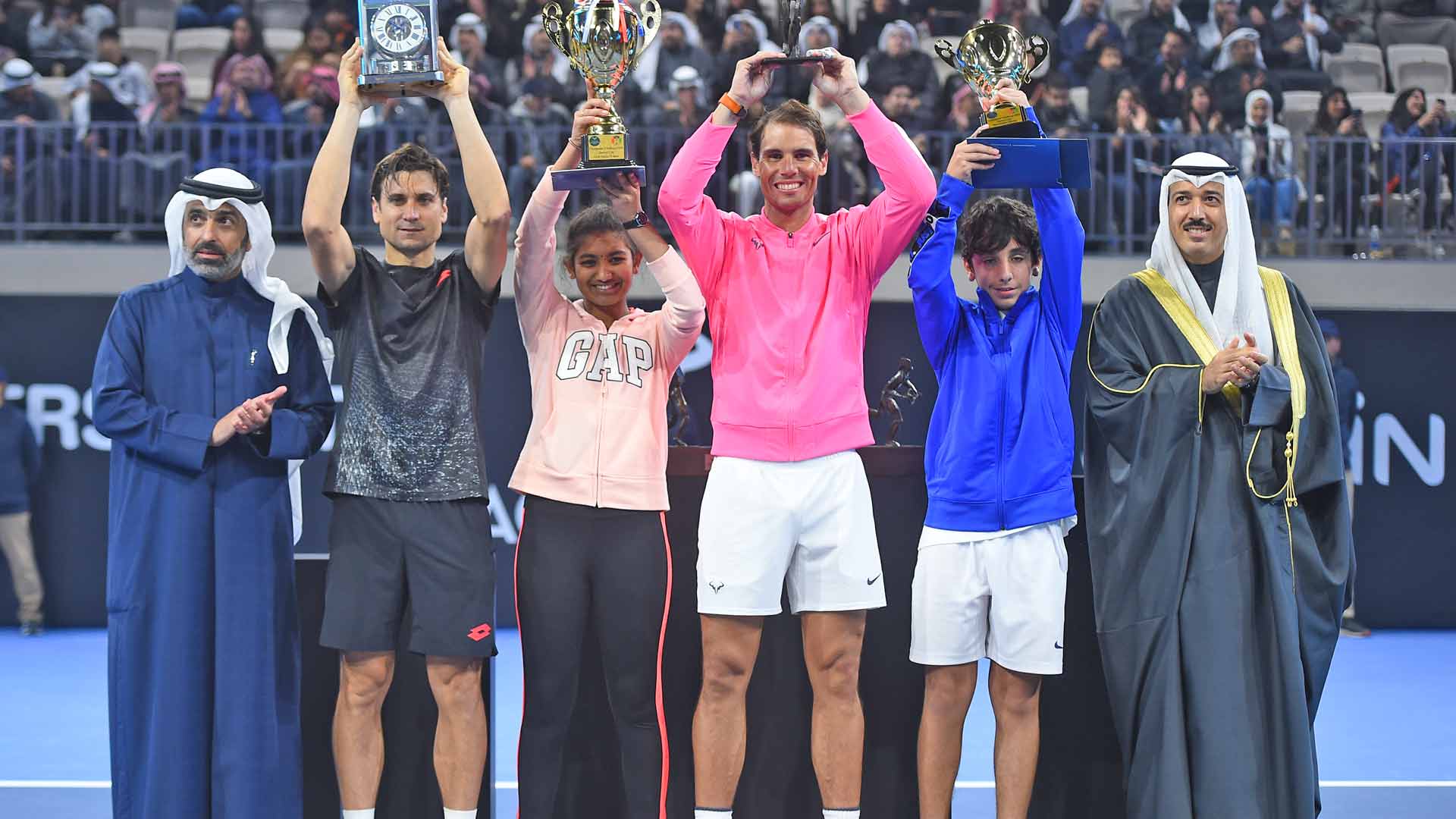British number two Heather Watson writes in her BBC Sport column about preparing to lead Great Britain’s Fed Cup team for the match against Slovenia on 7-8 February.
This time last year I was watching the Fed Cup from my bed – it was a really bad experience for me.
It was such a shame – after playing Fed Cup for all those years I had never been part of a home tie. And then we were finally at home in Bath but I was literally bed-bound for the whole week with illness, even afterwards as well.
I was live-streaming all the girls’ matches every day, they just did so well. Then in April I was part of the team that won the tie against Kazakhstan at the Copper Box in London, and that was an amazing experience.
A year on from Bath, I am coming into this week’s tie against Slovakia feeling really happy. It will be my 32nd tie and if we win, we will get through to April’s first ever Fed Cup Finals in Budapest.
This time round I am playing as the number one player for Great Britain because Johanna Konta won’t be there. I’ve played number one before a few times so it doesn’t feel too different, and I’m just really excited about the matches this week.
I know the girls in the team really well. We’re all equal and we’re good friends, so being number one doesn’t make it any different in that sense.
Jo is a really good friend of mine so I was sad when she said she wasn’t playing this year but I totally understand her reasons. From a selfish perspective I would have loved her here but all the other girls are great and there’s a brilliant atmosphere in the group.
Since August-September last year I have been playing some really good tennis, I’ve just been consistent with my results and have been climbing the rankings again. I’m really happy and I’m really enjoying my tennis and I think it is really showing.
I’m 74 in the world at the moment and I’m feeling super confident. I’ve had a lot of matches this year – including reaching the semi-finals in Hobart last month – and on the practice court I am hitting the ball well.
I feel like I’m on a good run and I hope I can carry it into our matches on Friday and Saturday.
Jet lag, lost bags and temperature drops
As a professional tennis player you do a lot of travelling and are away from home a lot, but that’s one of the sacrifices you have to make.
I’ve just come back from Melbourne, which is 12 hours ahead of Bratislava where I am now. The jet lag hasn’t been too bad though. In fact, when I come back from Australia I am always super tired at night and I wake up fresh as a daisy in the morning because I’ve had an early night.
It was nearly 40 degrees in Melbourne and now I’m in around eight degrees here, but even that is fine.
We are just so used to it, we bring all the right clothes and we’ve got a really good support team here from the LTA, who do a brilliant job on the physio, strength and conditioning and medical side of things, so we know we’re going to be in the best possible shape for the matches.
I didn’t lose any luggage this time round but it has happened to me quite a few times where my bags haven’t arrived.
One year I flew to Australia, they lost my bag and I had to borrow my friend’s clothes for the next two days. Luckily, it was just over Christmas so I just had those two days off and didn’t need to find any tennis clothes. They’ve never lost my racquets which is lucky, it’s always just my case.
Apart from the time zone and the temperature, we’ve also had to get used to playing on a clay court instead of a hard court, which is what we were playing on in Australia.
It’s hard to adjust in a short space of time but it’s the same for everyone and I’m sure the matches will be really tight come the weekend.
We hit on clay a few times in London before we got here which was a good start, but the clay is different here. The court is really nice, I like it more, so that’s a good thing.
Team spirit and Craig David
There’s a good team spirit naturally within the group but we do also play games in Fed Cup weeks to keep everyone laughing in the team room.
This morning we filmed a feature for LTA’s social media channels where we were shown some old social media posts and we had to guess which player had posted them.
There were some shockers in there so it was really funny – apparently you could hear us laughing from next door! The best one was a picture Annie K posted from when she met Craig David a few years ago. It was very corny, so we knew it was her.
We all have a good time on the court during practice as well – the warm-ups are always good fun and get people going well. Anne has been really positive and she’s been motivating us all week, so everyone’s feeling good and looking forward to getting started.
We always get great support at Fed Cup both in the arenas and at home, so I’m sure we’ll get that again and hopefully we can give you all something to shout about.
Heather Watson was speaking to BBC Sport’s Sonia Oxley






